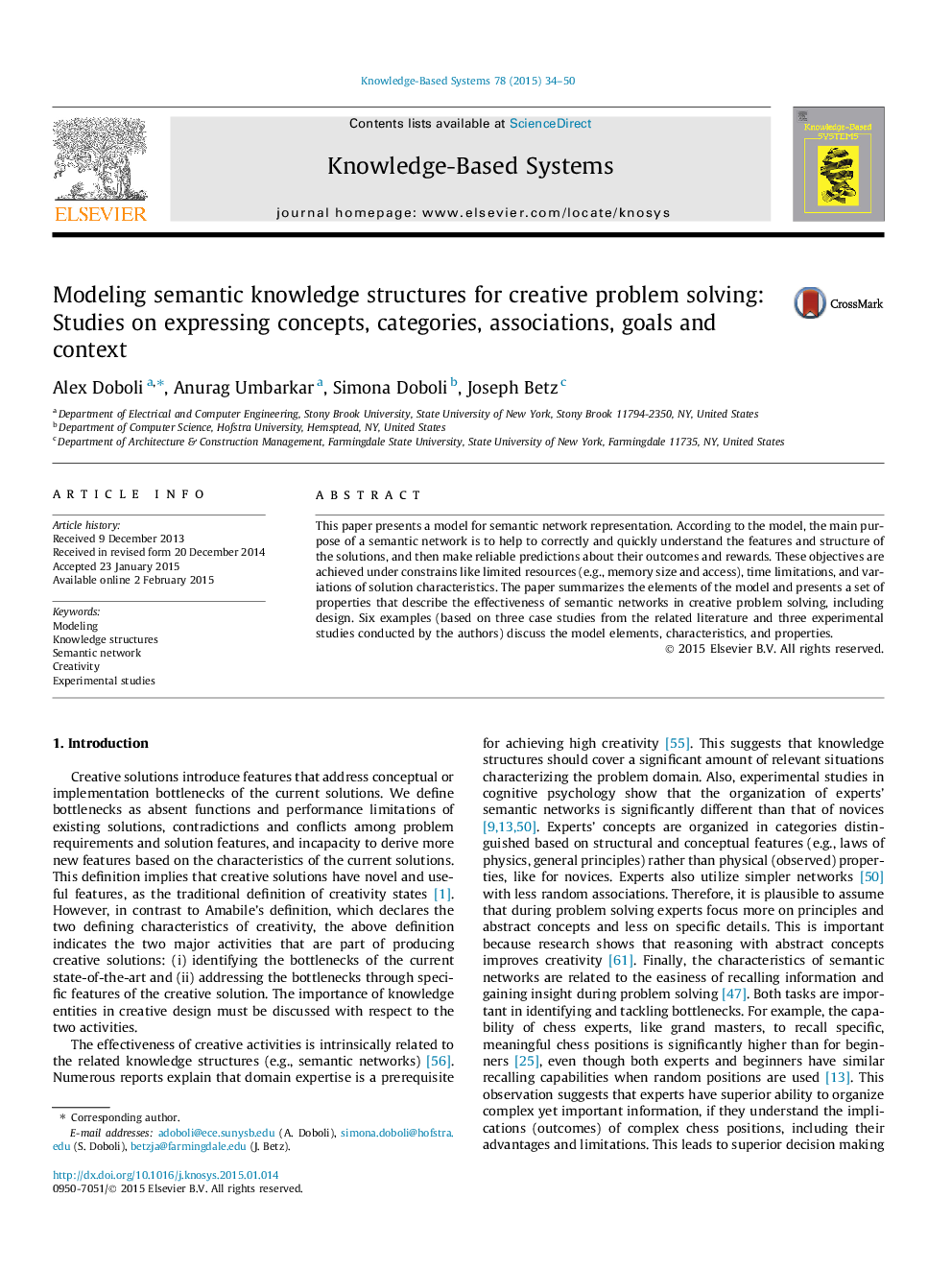| Article ID | Journal | Published Year | Pages | File Type |
|---|---|---|---|---|
| 402648 | Knowledge-Based Systems | 2015 | 17 Pages |
This paper presents a model for semantic network representation. According to the model, the main purpose of a semantic network is to help to correctly and quickly understand the features and structure of the solutions, and then make reliable predictions about their outcomes and rewards. These objectives are achieved under constrains like limited resources (e.g., memory size and access), time limitations, and variations of solution characteristics. The paper summarizes the elements of the model and presents a set of properties that describe the effectiveness of semantic networks in creative problem solving, including design. Six examples (based on three case studies from the related literature and three experimental studies conducted by the authors) discuss the model elements, characteristics, and properties.
